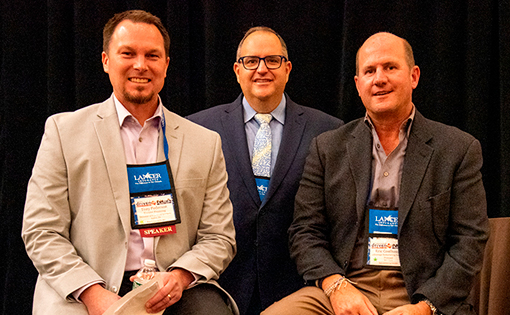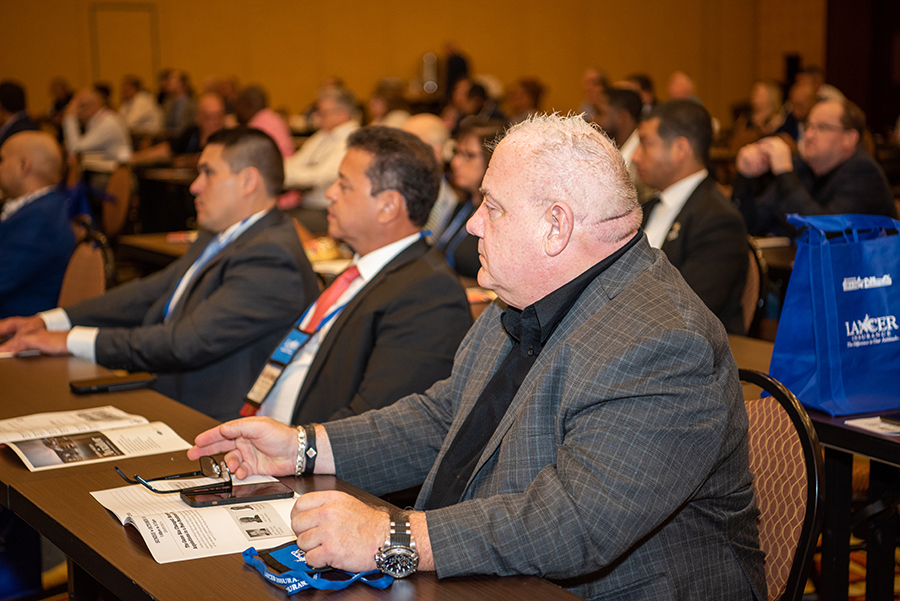The economy keeps getting stronger for our industry, and many operators are now in growth mode as they capture new business, serve their clients in different ways, or look to replace some of the fleet that they shed in the past two years. Deferrals, especially on larger equipment, were an important lifeline for many when revenue was severely impacted, and as we move forward, those relationships with lenders will be put to the test as operators look to take on more assets and seek funding to do so.
That was the focus of the recent Rebuilding Your Credit & A Look at Post-Pandemic Financing, a session held at the CD/NLA Show in Dallas this past October, featuring speakers Eric Coolbaugh of Advantage Remarketing Solutions and Tony Pederson of Premier Financing (moderated by Jason Sharenow of Broadway Elite Worldwide). In this critical session, the trio shared tips on gaining the confidence of lenders, pulling yourself out of your economic struggles, and setting your business on a course of financial health now and into the future.
 Tony Pederson of Premier Financing (left) and Eric Coolbaugh of Advantage Remarketing Solutions spearheaded the Rebuilding Your Credit & A Look at Post-Pandemic Financing at the 2021 CD/NLA Show in Dallas. Jason Sharenow of Broadway Elite Worldwide (center) moderated. So, who is lending right now?
Tony Pederson of Premier Financing (left) and Eric Coolbaugh of Advantage Remarketing Solutions spearheaded the Rebuilding Your Credit & A Look at Post-Pandemic Financing at the 2021 CD/NLA Show in Dallas. Jason Sharenow of Broadway Elite Worldwide (center) moderated. So, who is lending right now?
“There is money available. There are fewer lenders out there, but there are lenders that are very happy with this industry. Many of the old-guard players who have larger portfolios are taking a wait-and-see approach—they want to see operators return to a much fuller deployment of their assets—but there are others who didn’t quite take the same hit that are very actively lending right now. You have to come with a story, a good justification for what you are looking to purchase. Ideally, they’d love to see contract buying,” said Pederson.
“Banks have adjusted and they’ve all learned how to lend money again—and it’s relatively easy to get it as long as you have a plan,” said Coolbaugh.
Big banks vs. local
“[The bigger lenders] might be willing to work with you if you came through this pretty clean. If your revenue has bounced back to near 100 percent and it’s well diversified, they may consider lending. I’ve been hearing that they like contract work where it’s steady or guaranteed money like school work or employee shuttles. In good times, local banks are always flush with cash and they want to jump in and start financing but they’re quick to retract when there’s a little blip. Many operators experienced that, so local banks may not be taking on new accounts right now,” said Pederson. “It’s a cautious approach, but it’s really the responsible thing. You want a lender that understands the industry—its seasonality, what assets are worth, who the networks are, how to structure the financing,” said Coolbaugh.
What about those deferrals?
“If you rely on a market that isn’t likely to come back for a few years, then additional deferrals don’t make much sense—it’s not going to help because you’re not going to get that revenue back,” said Coolbaugh.
“Lenders want to see diversification within your portfolio, how have you strategized your business to find other markets to fill your books when business was slow—did you use this time wisely? Lenders want to see at least six months of repayment after deferrals before taking on new debt,” said Pederson.
Preparing your company to approach lenders
“It’s important to update your financials on a very regular basis. I check internally every week or two, and then monthly, plus quarterly with our accountant. If you’re going to be borrowing, you’re going to need to provide that information to the lenders, so you need to know exactly where you stand,” said Sharenow.
 “Have a better relationship with your accountant, maybe even do your financials monthly so that when you do go into the marketplace to go get lending, your financials are available. Pay down assets. If you can throw extra money at debt, you’ll be in a better position. If you get ahead, that’s more cash you free up for the future,” said Pederson.
“Have a better relationship with your accountant, maybe even do your financials monthly so that when you do go into the marketplace to go get lending, your financials are available. Pay down assets. If you can throw extra money at debt, you’ll be in a better position. If you get ahead, that’s more cash you free up for the future,” said Pederson.
“I think the magic number has always been 50 percent—half your fleet should be owned free and clear and 50 percent can be leveraged. Look at your fleet and make sure you don’t have everything 100 percent financed because if there’s disruption (and there always is) your cash flow will more than likely be interrupted and you’ll have an issue paying debt,” said Coolbaugh.
Are motorcoach purchases possible, especially for smaller companies?
“Absolutely, if the strategy is there and the marketplace is there. You might have to give a bigger down payment and show that the business [for that vehicle] exists, but it definitely can get done,” said Pederson.
“I don’t think it’s going to be much of a problem either, especially with the 24/7 and luxury nature of the industry compared to the traditional motorcoach companies that close up shop at 6 p.m.,” said Coolbaugh.
“The secret that I’ve always lived by with our vehicle purchases is if I can’t pay off something in 36 months, then I don’t buy it. That means that I either don’t need it bad enough or I can’t afford it, so even if I’m buying a half-million-dollar motorcoach, it has to make sense. It’s a good feeling to know that you’ve paid off the vehicle in 36 months and then run it for another several years with no payments. Then you’re building up massive amounts of cash that you wouldn’t have if you had spread out those payments. When I go to buy the next vehicle, I can pay for it in cash or put down a sizeable down payment,” said Sharenow.
What about rates?
“Banks have certainly made it a bit tougher to get those 4, 5, or 6 percent rates, and I’m seeing 6 up to 7.5 percent in my world, but when you’re dealing with lenders who understand the industry and its assets, you’ll see approvals as fast as 24 hours versus a bank where you could be looking at a month-long process,” said Coolbaugh.
“Your financials have to make sense. Lenders are scoring out, which will determine your percentage rate. As you get healthier, the rates you’ll be able to get will be healthier as well. For lenders, the biggest thing that they are looking for is cash flow, so the closer you are to that 50/50 ratio, the better. If you’re looking to pay down some debt to free up cash, then I would say to pay toward your vehicles first,” said Pederson.
Effects of bankruptcy?
“Traditionally, it’s going to take 5-7 years to rebuild your credit. You might find some secondary lenders—or more likely, third-tier lenders—who will do it sooner, but you’re going to pay for it. Expect rates in the high teens or low 20s. It’s been a long time and people are stressed out mentally and financially, but really consider all the options before bankruptcy because it will have a long impact on your credit,” said Pederson.
“Lenders like ourselves are willing to work with anyone who is having an issue but there’s going to be a conversation about whether it’s a long-term or short-term issue. I have seen a lot of restructuring (Chapter 11) that has the best interests of everyone in mind, where everyone is going to take a haircut, but most will get through it better than a full bankruptcy (Chapter 7),” said Coolbaugh.
Final thoughts?
“I keep hearing, ‘I can’t wait until it goes back to normal’ but I don’t think it’s ever going back to what it was before. We need to plan to live with this pandemic and whatever virus comes after it ... forever. We’ve changed the way we travel, the way we work, the way we view corporate events, and if we’re not looking at that as a company and an industry, then we’re doing ourselves a disservice. We’re your banking partners, so utilize us any way you need,” said Coolbaugh.
“None of us has a crystal ball, but communication is the most important thing that I can think of. If you have a lending partner, just try to be as open and honest as you can—and how you’re trying to change your business to be more resolute,” said Pederson. [CD0222]
What Does the Lending Market Look Like in 2022
- Details

